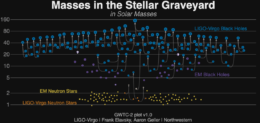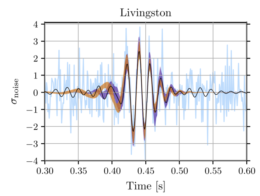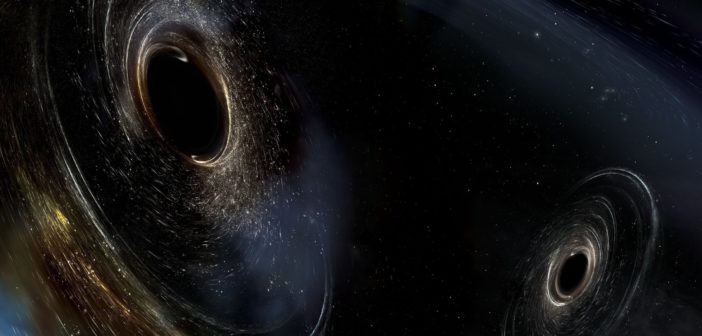The tally of merging black holes detected by the LIGO-Virgo gravitational-wave detectors continues to grow; the most recent data release brings the total to nearly 50 collisions! But how do these black-hole binaries form in the first place?
Two Formation Channels

Still from a simulation showing how black holes might dynamically form as they interact in the chaotic cores of globular clusters. [Carl Rodriguez/Northwestern Visualization]
There are two leading theories for how such pairs of black holes might arise in our universe. In isolated binary evolution, two massive stars of a stellar binary independently evolve into black holes. In dynamical encounters, single black holes pair up into binaries through gravitational interactions in the center of a dense, crowded star cluster.
Two Observational Clues
How can we determine which formation channel produced the black-hole binaries we’ve detected so far? Two observational signatures, in particular, could point to a dynamical merger:
- Spin misalignment
Due to conservation of angular momentum, black holes in isolated binaries are expected to have aligned spins. Black holes that pair up via dynamical encounters, on the other hand, are likely to have random, misaligned spins. - Orbital eccentricity
If a binary evolves in isolation, any initial eccentricity is damped long before the black holes merge. In the dynamical scenario, however, the abruptly formed binaries can merge before their orbits have time to circularize.

The most recent version of the rapidly expanding “stellar graveyard”, a plot that shows the masses of the different components of observed compact binary mergers. GW190521, seen at the top center, is more massive than any other binary merger we’ve observed. Click to enlarge. [LIGO-Virgo/Northwestern U./Frank Elavsky & Aaron Geller]
One Intriguing Collision
GW190521 has set records as a heavyweight: the merging components were ~85 and ~66 solar masses. These unusually large black holes already hint at a dynamical formation for the binary: it’s easier to explain black holes of this mass if they grew via successive mergers in a dense stellar environment.
Now, a team of scientists led by Isobel Romero-Shaw (Monash University and OzGrav, Australia) has followed up on this clue, modeling the GW190521 signal with a variety of waveforms to explore the binary’s eccentricity and spin alignment.

To extract information like black-hole masses, spin alignments, and orbital eccentricities, scientists fit model waveforms to the gravitational-wave signal. Here, the orange, purple, and black lines represent different waveforms that are plotted over the blue LIGO Livingston data for GW190521. [Adapted from R. Abbott et al. (LIGO Scientific Collaboration and Virgo Collaboration)]
As LIGO-Virgo continues to amass detections, we may soon be able to build a statistical picture of how these black-hole binaries formed. But in the meantime, careful modeling of individual collisions like GW190521 are providing valuable insight.
Citation
“GW190521: Orbital Eccentricity and Signatures of Dynamical Formation in a Binary Black Hole Merger Signal,” Isobel Romero-Shaw et al 2020 ApJL 903 L5. doi:10.3847/2041-8213/abbe26


3 Comments
Pingback: From AAS NOVA: “Eccentricity, Spin, and the Origins of Colliding Black Holes” | sciencesprings
Pingback: Pochodzenie i orbity zderzających się czarnych dziur – PTMA Kraków
Pingback: Pochodzenie i orbity zderzających się czarnych dziur – Astronomia Śląska